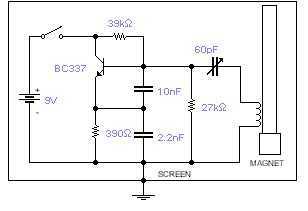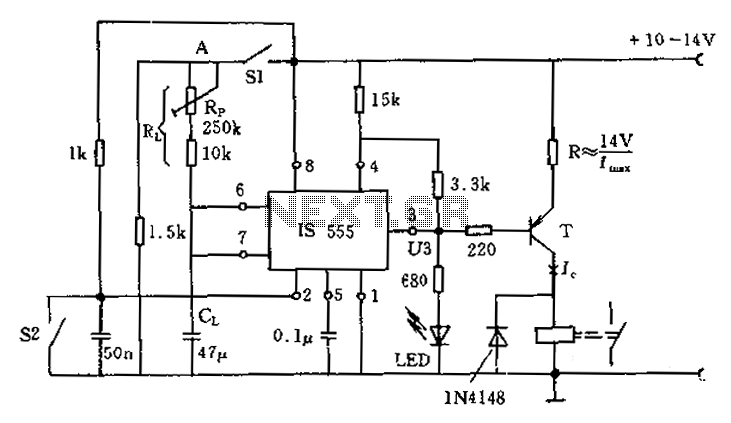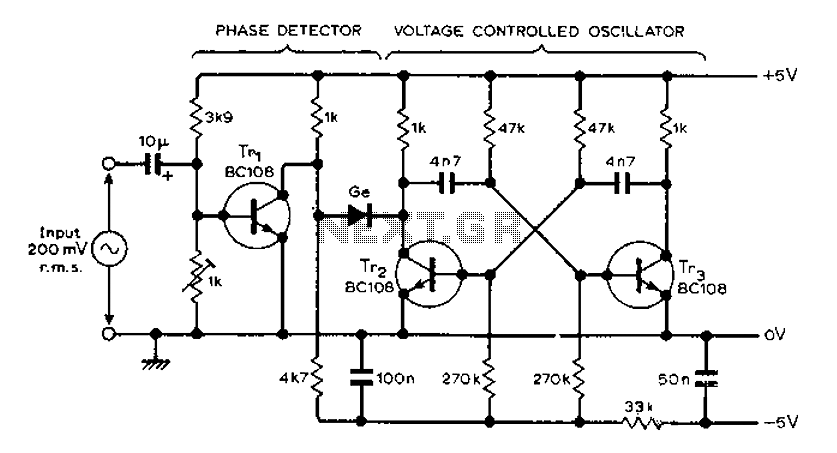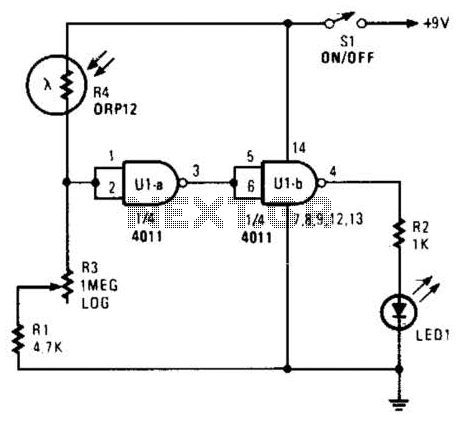
Geomagnetic Field Detector circuit

This basic oscillator will detect the Earth magnetic field. The ferrite rod and coil are taken from an old Medium Wave receiver and a small magnet is glued at one end. Tune to a medium wave commercial station until you hear a beat note. Any movement of the ferrite rod will produce an audible note that depends on the prevailing Earth magnetic field. Screening is essential. Use a plastic box padded, on the inside, with copper wires running parallel to the rod and grounded in one place only. A small hole is made in the box in order to adjust the trimmer capacitor with a plastic screwdriver. An American equivalent to the BC337 could be the 2N2369A but I did not try it out.
This oscillator circuit operates based on the principle of detecting variations in the Earth's magnetic field using a ferrite rod and coil assembly. The ferrite rod serves as a magnetic core, enhancing the inductance of the coil wound around it. The coil is sourced from an old Medium Wave receiver, which is re-purposed to serve as the sensing element for the oscillator.
To assemble the circuit, a small magnet is affixed to one end of the ferrite rod. This magnet interacts with the Earth's magnetic field, and any movement of the ferrite rod will induce changes in the magnetic flux through the coil. These changes will produce variations in the oscillator's frequency, which can be heard as an audible note when tuned to a medium wave commercial station.
Proper screening is critical to the performance of this oscillator. The circuit is enclosed in a plastic box that is internally padded with copper wires. These wires should run parallel to the ferrite rod and be grounded at a single point to minimize electromagnetic interference and enhance the sensitivity of the oscillator.
A trimmer capacitor is included in the circuit to allow for fine-tuning of the oscillator frequency. A small access hole is provided in the enclosure, enabling adjustment of the capacitor using a plastic screwdriver, which prevents any potential short circuits or interference from metal tools.
For the transistor component of the circuit, the BC337 is recommended, although it can be substituted with the 2N2369A, which is an American equivalent. This transistor functions as an amplifier within the oscillator circuit, converting the oscillations produced by the coil into a signal that can be heard through a speaker or headphone.
Overall, this simple oscillator circuit offers a practical application for detecting variations in the Earth's magnetic field, making it an interesting project for electronics enthusiasts and those interested in magnetism.This basic oscillator will detect the Earth magnetic field. The ferrite rod and coil are taken from an old Medium Wave receiver and a small magnet is glued at one end. Tune to a medium wave commercial station until you hear a beat note. Any movement of the ferrite rod will produce an audible note that depends on the prevailing Earth magnetic field.
Screening is essential. Use a plastic box padded, on the inside, with copper wires running parallel to the rod and grounded in one place only. A small hole is made in the box in order to adjust the trimmer capacitor with a plastic screwdriver. An American equivalent to the BC337 could be the 2N2369A but I did not try it out. 🔗 External reference
This oscillator circuit operates based on the principle of detecting variations in the Earth's magnetic field using a ferrite rod and coil assembly. The ferrite rod serves as a magnetic core, enhancing the inductance of the coil wound around it. The coil is sourced from an old Medium Wave receiver, which is re-purposed to serve as the sensing element for the oscillator.
To assemble the circuit, a small magnet is affixed to one end of the ferrite rod. This magnet interacts with the Earth's magnetic field, and any movement of the ferrite rod will induce changes in the magnetic flux through the coil. These changes will produce variations in the oscillator's frequency, which can be heard as an audible note when tuned to a medium wave commercial station.
Proper screening is critical to the performance of this oscillator. The circuit is enclosed in a plastic box that is internally padded with copper wires. These wires should run parallel to the ferrite rod and be grounded at a single point to minimize electromagnetic interference and enhance the sensitivity of the oscillator.
A trimmer capacitor is included in the circuit to allow for fine-tuning of the oscillator frequency. A small access hole is provided in the enclosure, enabling adjustment of the capacitor using a plastic screwdriver, which prevents any potential short circuits or interference from metal tools.
For the transistor component of the circuit, the BC337 is recommended, although it can be substituted with the 2N2369A, which is an American equivalent. This transistor functions as an amplifier within the oscillator circuit, converting the oscillations produced by the coil into a signal that can be heard through a speaker or headphone.
Overall, this simple oscillator circuit offers a practical application for detecting variations in the Earth's magnetic field, making it an interesting project for electronics enthusiasts and those interested in magnetism.This basic oscillator will detect the Earth magnetic field. The ferrite rod and coil are taken from an old Medium Wave receiver and a small magnet is glued at one end. Tune to a medium wave commercial station until you hear a beat note. Any movement of the ferrite rod will produce an audible note that depends on the prevailing Earth magnetic field.
Screening is essential. Use a plastic box padded, on the inside, with copper wires running parallel to the rod and grounded in one place only. A small hole is made in the box in order to adjust the trimmer capacitor with a plastic screwdriver. An American equivalent to the BC337 could be the 2N2369A but I did not try it out. 🔗 External reference





